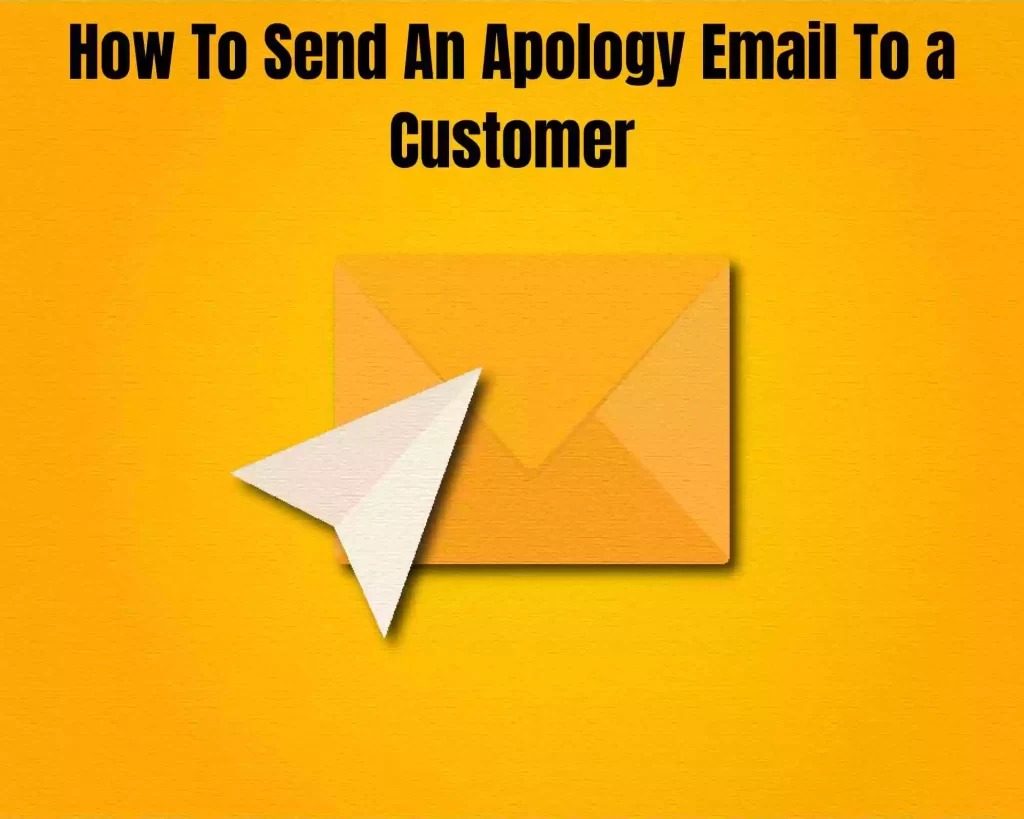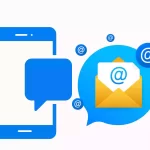We all demand high-quality goods and services from the firms with whom we do business. Unfortunately, things might go wrong at times. This is where knowing how to send an apology email to a customer comes into place.
Apologizing to a customer for an error or inconvenience may go a long way toward creating trust and building a relationship.
I recently had an incident with a firm where I got a defective good. Still, their apology email was a fantastic example of how to send an apology email to a customer.
But, In this blog article, I will focus mainly on how to send an apology email, when you should send it, and when not to assist you in maintaining relationships with your customers.
I have written a comprehensive guide for you on how to write an apology email.
Keep reading
5 Tips On How To Send An Apology Email To Customers
Before you go ahead to send your apology email to the customer: Here are five things to keep in mind so that your apology email reaches its original purpose
1. Avoid negative terms in your subject line
You should not send emails with subject lines that make the receiver uncomfortable. Avoid phrases like “I’m sorry” or “Please forgive me.”
Instead, strive to create the email subject line in a manner that compels people to open it.
Example of invalid subject line: I’m really sorry. Give me a chance to rectify this.
Nice topic line example: Please retract our previous email
Acknowledge your error like the article suggested, don’t conceal it. Make your subject line light enough for recipients to open the email.
You may read our guide on how to write an email that gets opened.
2. Avoid extreme adjectives
Strong words like “truly regretful” or “deeply mortified” might have the opposite impact.
Instead of using these phrases, positively structure your apology email by outlining what you did correctly and why the receiver should be delighted to hear this information.
Example of an incorrect phrase: “We are really humiliated that we mentioned…”
Good Phrase Example: “We are contacting you to rectify an issue from our earlier email….”
This is a lesson learned. It is not essential to give up all your secrets or sentiments.
Don’t say: “I made a mistake in my prior email.” Instead, try: “In our previous communication, we may have created a false impression….”
This advice helps make it evident that you’re not attempting to conceal anything and are more likely to anticipate forgiveness when done the proper way.
3. Avoid negative phrases
Here’s a suggestion that applies to all your conversations, not just apology emails. Negative phrases intimidate your recipients or generate unfavorable implications.
You don’t want to look protective or defensive since it will make your apologies less genuine and more likely to be rejected.
If possible, consider employing an alternative term with a positive meaning instead of a word with a bad connotation.
For example, “mistake” might become “error.”
These are some unfavorable phrases to avoid in your apologetic email
- Uncertain
- Fear
- Problem
- Unfortunately
- Terrible
- Failure
- Hard
To explain this in a real-world context, here are two instances.
| Negative example: | Positive example: |
| “The problem was that the link we shared in our previous email was broken, causing your order to fail. We may be unable to fix this issue before the end of the week. We are extremely sorry. “ | “Our situation was that the link we sent you in our previous email needed to be fixed, meaning your order may not be fulfilled. Our technical team is fixing the problem so you can place your order by the end of the week. I appreciate your understanding.” |
4. Don’t Blame
You don’t have to “point” at anybody in your apologetic email. Blaming others can only make the issue worse.
It would be best if you never said anything that blames a person or a group.
That would be, “we lost because our team wasn’t good enough.” No one wants to hear that.
Your apologetic email should be about how you would handle a problem, not what someone else did to cause the error.
5. Add a little humor
One approach to make your emails more successful is to utilize humor.
If it’s suitable, even light sarcasm may work as long as it’s not insulting.
This may be done by making jokes about the circumstance or saying something the sender and the recipient know may have some humor.
Humor is one method to reduce any tension your email can generate, and people will enjoy hearing from someone who has a good understanding of what makes them laugh.
You don’t always have to apologize throughout the email. It depends on the scenario. Let’s look at four circumstances when you do NOT need to write an apologetic email to a client.
When should an apology email not be sent to a customer?
Just as vital as understanding when to write an apology or correction email, it’s as crucial to know when not to send one.
1. When you make a spelling error
Everyone makes spelling and grammatical errors from time to time. Therefore, sending corrective emails and further cluttering someone’s mailbox is pointless.
It’s crucial to check for faults and try your best to prevent them in the future. I recommend you use Grammarly to check for grammatical errors
2. When you mistakenly send the same email twice
Even with today’s powerful email marketing automation tools. You may still send the same email twice to the same addressee.
If this occurs, it’s important not to make the mistake of adding a third email to the inbox to say “sorry.” Leave it and make a plan to offer a quick apology in the next planned email.
3. When you add a faulty coupon or discount code
Sometimes you can fix an issue by updating a back-end platform rather than revealing it to the receivers.
For example, suppose you should have mistakenly emailed your contact the incorrect coupon or promotional code. Replace the code behind with the wrong code so you can collect such purchases.
In email marketing and campaigns, there’s nothing wrong with not having someone out there notice it and contact you.
4. When you add a faulty link
Just as with a faulty coupon or promotional code, adding a broken link in an email may be corrected on the back end by a simple redirect to the proper Website.
Similarly, don’t compound a mistake by flooding your contact inboxes with excessive or unnecessary apologies when easy corrective action is performed.
Now let’s find out when you should send out an apology email.
When Should An Apology Email Be Sent To A Customer?
An apology email should be sent customer whenever there is an issue with your product or service that may cause the customer some displeasure.
Some situations where an apology email may be appropriate include:
1. Delays in delivery or missing deadlines
When a customer’s purchase is not delivered within the anticipated period or a promised deadline is not reached, it is important to write the customer an apology email as quickly as possible to explain the problem and provide a remedy.
2. Defects or malfunctions in the product
Product flaws or malfunctions are problems with a product that doesn’t allow it to work properly. This may include things like:
- Missing or damaged components
- Items that do not exceed quality requirements
- Damaged products that occurred during delivery or handling
- Items that do not function correctly or behave as claimed
- Things that endanger the user’s safety
In such a situation, you must apologize to the customer to show your business competencies.
3. Billing mistakes or overcharges
Billing mistakes or overcharges include price miscalculations, inaccurate billing dates, and payments for services or items the client still needs.
This can get the customers angry since they result in financial losses, which may spoil the reputation of your business.
When such a mistake is identified, it is critical to send an apologetic email to pacify consumers as soon as possible.
If possible, you should provide a refund to their account, as well as any other compensation.
4. Inadequate customer service or support
I said this earlier when a consumer had an unfavorable encounter with your company’s customer service or assistance.
In such circumstances, you should write a customer apology email to address their complaints and convey your remorse for the terrible service they experienced.
5. Miscommunication or incorrect information
When information is vague, partial, or erroneous, you should send an email to appease the customer.
For example, a client may be given misleading information regarding the availability of a product or service, the terms of a contract, or the cost of a product. Since the consumer may have made judgments based on inaccurate information, this might lead to irritation and unhappiness.
In short, any circumstance will make your customer angry or frustrated due to your company’s actions. It is important to write an apology email as soon as possible, preferably within 24-48 hours after the occurrence, to demonstrate to the client that you value their concerns and are devoted to fixing the situation.
Conclusion
Now that you understand when you should send an apology email and how to go about it, you’ve understood it.
It is important to note that sending an apologetic email to a client is an effective method to demonstrate that you respect their business and are dedicated to delivering good customer service.
Remember that errors happen, but how you address them is what matters. Therefore, the next time you need to apologize to a client, take a deep breath, put yourself in their place, and write an apologetic email demonstrating how much you care.
You can convert a terrible experience into a pleasant one with a little effort and sensitivity and keep your consumers returning for more.





